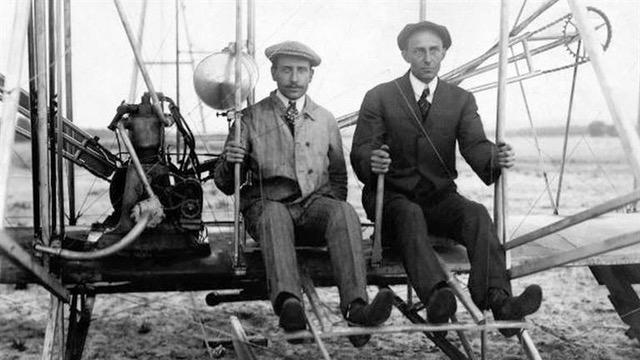
23 Dec Two Wright Brothers … Three Reasons For Success: “TEAMWORK, TONE, TENACITY!”
In December 1903 aviation pioneers Orville and Wilbur Wright invented, built and flew the first successful powered airplane in Kitty Hawk, North Carolina. In doing so these leaders inspired the world and set the stage for modern developments in aerospace. The achievement was no fluke. It was years in the making for these self-taught engineers (neither had a high school diploma) and came while numerous competitors were racing to be the first. What set the Wright Brothers apart? Three characteristics: “Teamwork, Tone, Tenacity®.”
- TEAMWORK: These two brothers (each flew their airplane twice on their historic day of accomplishment) blended their complementary academic, inventive and business strengths. We never hear of one overshadowing the other … they shared credit completely. The brothers were also quick to share credit and profits with their own shop employee, Charlie Taylor, who help them build their firs airplane engine, and their sister Katherine who devoted much of her life to assisting the lifelong bachelors.
- TONE: Orville and Wilbur were extraordinarily humble, perhaps owing to their upbringing as the sons of a Bishop. They never criticized their competitors, even when they were out-funded or when their rivals suffered significant failures. Their focus was not glory and fame. They simply wanted to be the first to solve the problem of powered flight. Upon receiving an award in France, Wilbur declared, “ When Wilbur Wright was given a medal in France, where he held his first major public “I see not merely an outburst intended to glorify a person, but a tribute to an idea that has always impassioned mankind.” Their positive TONE was also demonstrated by exceptional courage in a very risky undertaking and often suffering significant injuries in the process.
- TENACITY: Orville and Wilbur persevered with purpose. Their success came after years of trial and error in their Dayton, Ohio workshop and bicycle business where they tirelessly worked on motors, machinery, controls and gliders. When they failed, they failed spectacularly (aviation mishaps usually end that way). But after setbacks they literally returned to the drawing board and their workshop to try again with greater determination. In this sense the brothers weren’t lucky. It was hard work, ingenuity, energy and faith and self-induced motivation to overcome obstacles that led them to success. Along they way they lived on a tight budget so they could experiment more often, designing their own wind tunnel with a small room fan, hand stitching the cloth that covered their aircraft’s wings and even constructing their own shelter and work shack in Kitty Hawk for their momentous first flight. Total expenses for everything from 1900 to 1903, including materials and travel came to approximately $1,000, money saved from their the modest bicycle business in Dayton, Ohio!
Even after they became American and international heroes, Wilbur and Orville relentlessly kept working to improve their “Wright Flyer.” They never throttled back on the amount of energy and sheer determination they applied to master the art and applications of manned flight. With significant contracts from the U.S. Government – and military in particular – the brothers became wealthy businessmen and high-demand speakers which provided them a platform to encourage others to take the next steps in manned flight. Want a tangible example example of how the Wright Brothers’ “T3” motivated and inspired future generations to improve upon their work? Fellow Ohioan astronaut Neil Armstrong brought along a small swath of the muslin wing covering from the original Wright aircraft to the moon with Apollo 11 in 1969!

Sorry, the comment form is closed at this time.